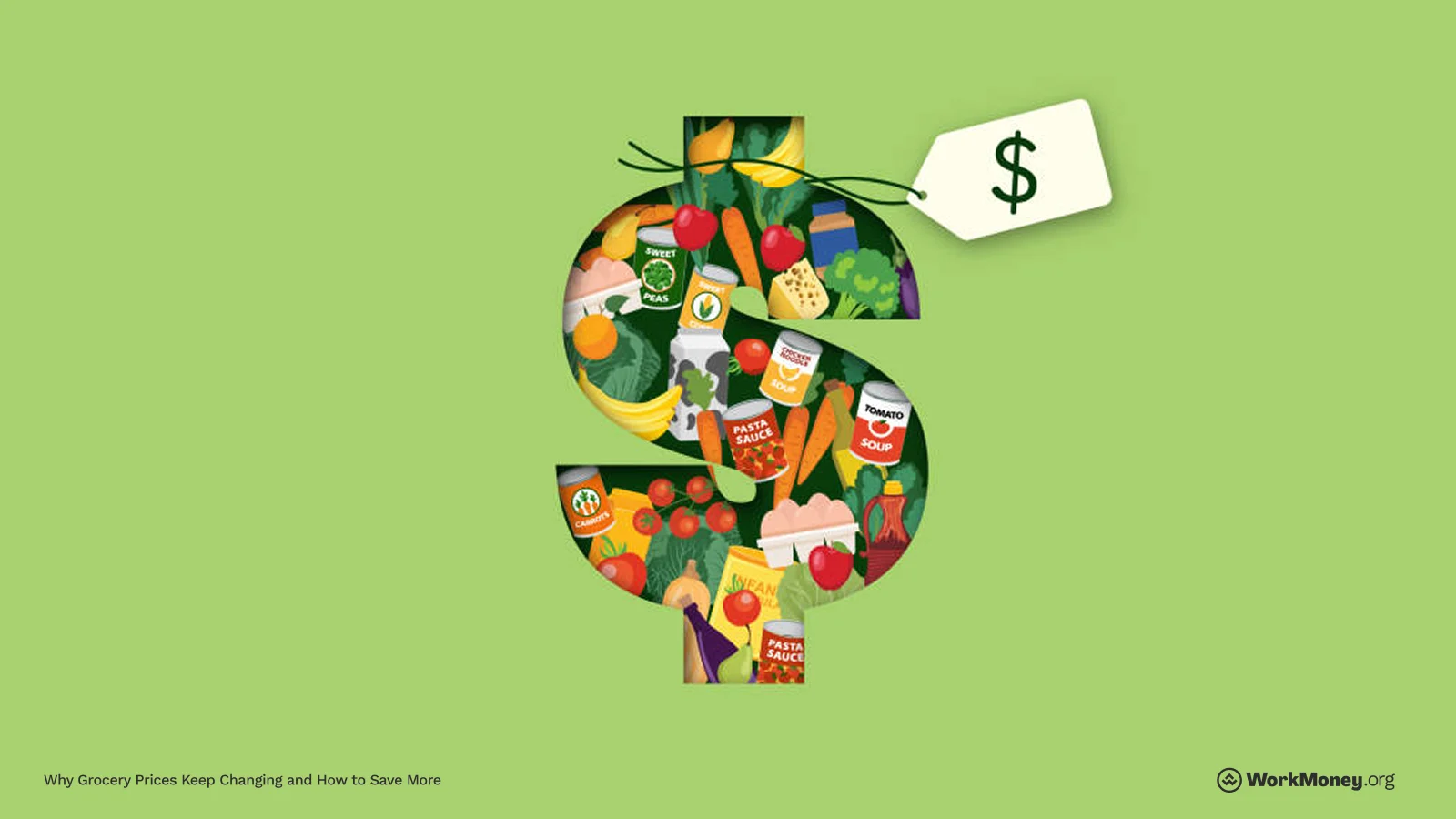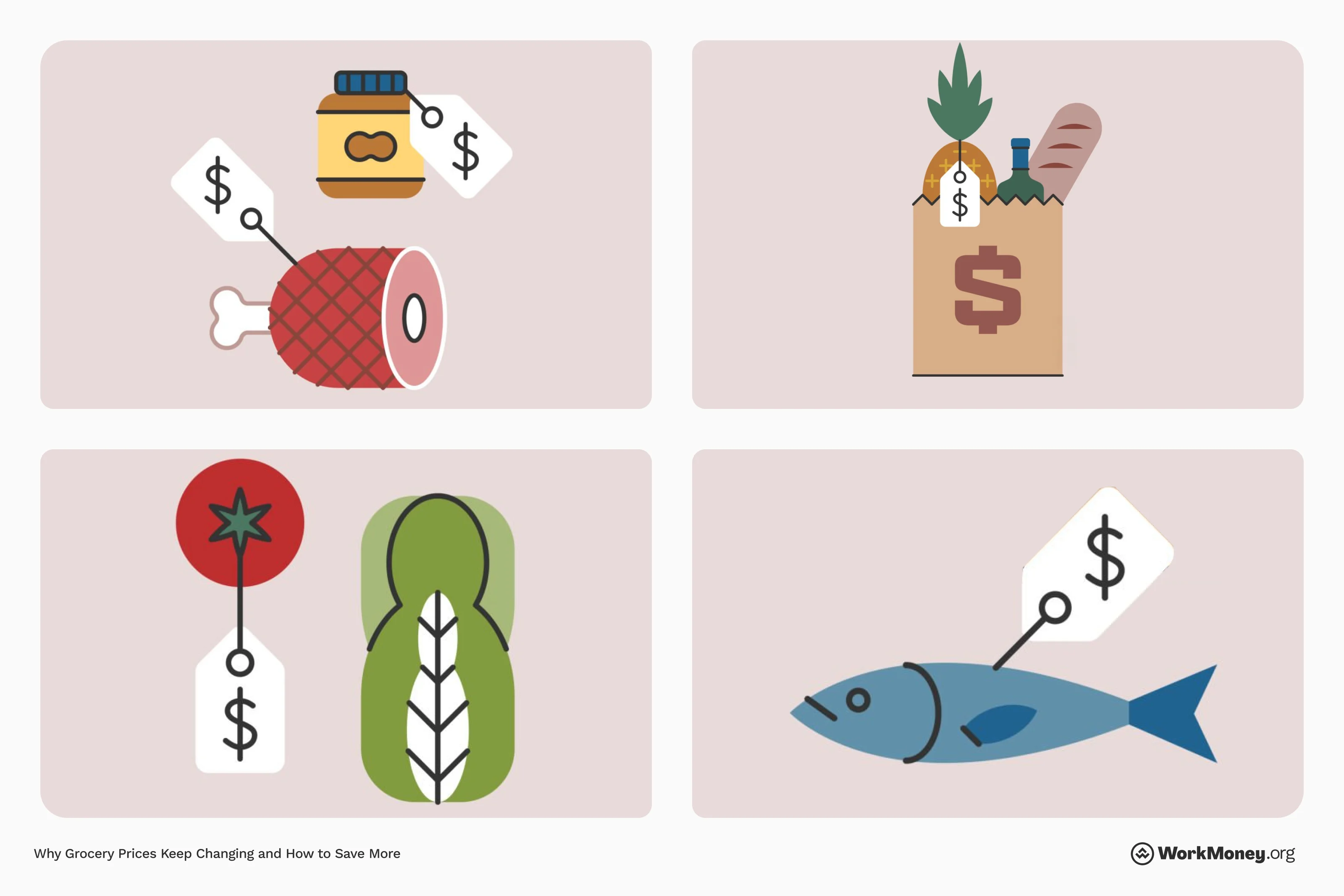Why Grocery Prices Keep Changing and How to Save More
Grocery prices have been unpredictable in recent years, but understanding what’s behind the rise — and learning how to shop smart — can help you save more and waste less.

Inflation Heavily Affects Grocery Prices
Inflation is one of the biggest reasons grocery prices go up. It happens when the cost of goods and services rises, reducing the value of money. In 2022 and 2023, inflation surged due to pandemic-related disruptions, worker shortages, and high demand. While inflation has recently slowed, food prices are 20-30% higher than pre-pandemic.
The Impact of Weather and Disease Outbreaks
Extreme weather and disease outbreaks significantly impact grocery prices by reducing supply and increasing costs.
Weather Disruptions
Severe weather conditions, including droughts, floods, and hurricanes, can destroy crops and make it harder to get food to their store. For example, droughts in California—a major agricultural hub—have led to reduced yields of almonds, lettuce, and tomatoes, driving up prices nationwide. Hurricanes can damage farmland, delay food transportation, and lead to shortages that cause price spikes.
Bird Flu and Livestock Diseases
Disease outbreaks among livestock can also cause food price increases. One of the most notable examples is bird flu (avian influenza), where millions of birds aren’t able to be used for consumption. This has led to sharp increases in egg prices.
Shrinkflation: Paying More for Less
Another reason shoppers feel the pinch is "shrinkflation." This is when companies reduce the size of a product while keeping the price the same—or even raising it. For example, a cereal box that used to be 14 ounces may now be 12 ounces, but the price remains unchanged. This practice helps companies protect their profits but makes it harder for shoppers to get the same value for their money.
In a recent study, about one-third of 100 grocery store items tracked had been impacted by shrinkflation.
How This Has Impacted Households
Rising grocery prices have put a significant strain on U.S. households, especially those already living paycheck to paycheck. This price surge has led many families to adjust their purchasing habits, opting for cheaper, lower-quality items or smaller quantities to stretch their budgets. As a result, families are forced to make difficult choices. In 2023, approximately 13.5% of U.S. households—about 18 million people—experienced food insecurity, meaning they lacked access to adequate food due to money issues.
The impact of rising grocery costs extends beyond financial strain, affecting overall well-being, particularly for low- and middle-income households. Many families are sacrificing other essentials, such as healthcare or transportation, in order to afford food.
If your family has been hit hard by rising prices, consider signing up for Upside to save on everyday groceries.

How to Save More on Groceries
Even with rising prices, there are ways to make your grocery budget go further. Here are some practical tips:
Use Coupons and Delivery Apps To Earn Savings
Many grocery stores offer coupons, both digital and paper, to help lower costs. Apps like Instacart and Upside can help you find discounts and promos to lower your overall bill.Consider Size and Buying in Bulk
When you’re looking at the variety of options, be sure to analyze the unit price as well. If a small bottle of maple syrup is $5, but the medium and large options are marginally more expensive, or a much better deal in terms of price per ounce, it’s prudent to select the best deal.
Additionally, consider shopping at stores like Costco and Sam’s Club for non-perishable items. Some bulk stores accept EBT cards, making it easier for SNAP recipients to stock up on essentials like rice, pasta, and canned goods.Plan Meals and Make a Shopping List
Impulse purchases can drive up grocery bills. Creating a meal plan and sticking to a shopping list helps avoid unnecessary spending. Planning meals around store sales and seasonal produce can also save money.Shop at Discount and Local Stores
Discount grocery stores like Aldi and Lidl often have lower prices than major supermarket chains. Farmers’ markets and food co-ops may offer fresh produce at good prices, and some accept SNAP benefits.Choose Store Brands Over National Brands
Store-brand products are often just as good as name brands but cost less. Many grocery chains have high-quality private-label brands that offer better prices without sacrificing taste.
Final Thoughts
Grocery prices will likely continue to fluctuate due to inflation, supply chain challenges, and corporate pricing strategies. While rising costs are tough for all shoppers, they hit hardest for those relying on government assistance. However, by using smart shopping strategies, planning meals, and taking advantage of discounts and benefits, consumers can better manage their grocery expenses. Staying informed about economic trends can also help shoppers make wise purchasing decisions and get the most value for their money.
About the Author

Brett Holzhauer
Brett Holzhauer is a Certified Personal Finance Counselor (CPFC) who has reported for outlets like CNBC Select, Forbes Advisor, LendingTree, UpgradedPoints, MoneyGeek and more throughout his career. He is an alum of the Walter Cronkite School of Journalism at Arizona State. When he is not reporting, Brett is likely watching college football or traveling.

